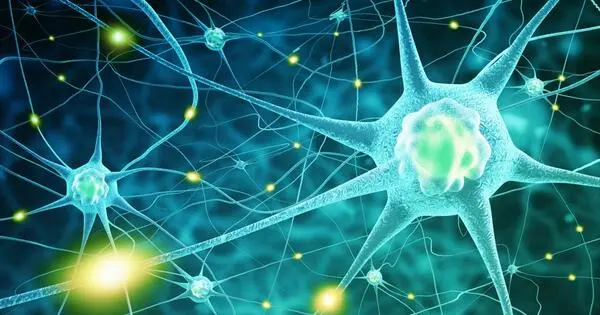Psychotic disorders are a group of serious mental illnesses. They make it difficult to think clearly, make sound decisions, respond emotionally, communicate effectively, understand reality, and behave appropriately. When symptoms are severe, people with psychotic disorders struggle to maintain contact with reality and are frequently unable to function in daily life. However, even severe psychotic disorders can usually be treated.
Communication between brain areas is essential for the brain to process sensory signals correctly and respond appropriately. Nonetheless, dysfunctions in these communication pathways may be strongly linked to the onset of schizophrenia. For the first time, a team from the University of Geneva (UNIGE), Switzerland, has demonstrated this phenomenon in humans as part of the Synapsy National Centre of Competence in Research.
By carrying out analyses of the brain activity of children, adolescents, and young adults with a genetic risk of the disease, the research team has demonstrated that a reduction in the activation of gamma waves, which are known for their role in the proper transmission of information in the brain, was correlated with the emergence of psychotic symptoms even before full-blown disorders appear. This work, published in the American Journal of Psychiatry, makes it possible to envisage a very early diagnosis.
Our results confirm that this dysfunction appears very early. We now want to identify the best time during the child’s development to intervene in relation to this pathological shift.
Stephan Eliez
The electrical activity of neurons in the mammalian brain responds to oscillatory rhythms that electroencephalography can detect. The coordinated activation of these various waves, which govern, for example, sensory input processing or memory consolidation, allows the brain to function properly. “We suspected that gamma waves, the highest frequency of brain rhythms, play a decisive role in the development of schizophrenia symptoms,” say Stephan Eliez, professor in the Department of Psychiatry, and Christoph Michel, professor in the Department of Basic Neuroscience, who co-directed the research. “However, we still needed to confirm that the impaired synchronization of neural communication pathways observed in mice exists in humans.”
Genetic predisposition
People with a chromosomal microdeletion 22q11 have a 25 to 30% risk of developing schizophrenia in adulthood. “They are therefore a particularly relevant at-risk population for studying the cerebral development of this disease,” says Valentina Mancini, a doctoral student in Stephan Eliez’s laboratory and the first author of this study. People with schizophrenia often suffer from a reduced capacity to process auditory information; in order to detect any disturbance in brain communication, the scientists, therefore, measured gamma wave activation following an auditory stimulus in 22q11 patients of all ages, compared with people without this microdeletion.

“Children and adolescents at genetic risk of schizophrenic disorders but without visible symptoms showed the same patterns of gamma wave disruption as patients actually suffering from the disease,” explains Vincent Rochas, a scientific collaborator in Christoph Michel’s laboratory. In addition, linear growth of the gamma-band oscillations was observed in people with no genetic predisposition to schizophrenia, showing a progressive maturation of communication between the cerebral areas during development. “However, this maturation is absent in 22q11 patients, whatever their age, suggesting an abnormal development of circuits underlying neural oscillations in adolescence,” stresses Valentina Mancini.
Intervening as early as possible
The research team also identified a strong correlation between the gamma-band activation deficit and the severity of psychotic symptoms, such as auditory hallucinations, thus confirming the existence of a neurobiological progression of the disease.
“Our results confirm that this dysfunction appears very early,” the authors emphasize. “We now want to identify the best time during the child’s development to intervene in relation to this pathological shift.” Moreover, studies on mice show that targeted neuroleptic treatments succeed in correcting neural dysfunctions; in addition, the gamma-band impairments identified here could be restored using techniques of non-invasive neurostimulation targeting the affected brain regions, thus opening the way to completely new therapeutic perspectives for treating an often devastating disease.
Scientists at @unige_en demonstrate how a defect in communication between #brain areas is linked to the onset of #psychotic disorders.https://t.co/Ghdg4cjZne pic.twitter.com/2ZQsCmfUOZ
— UNIGE_en (@unige_en) March 3, 2022
















